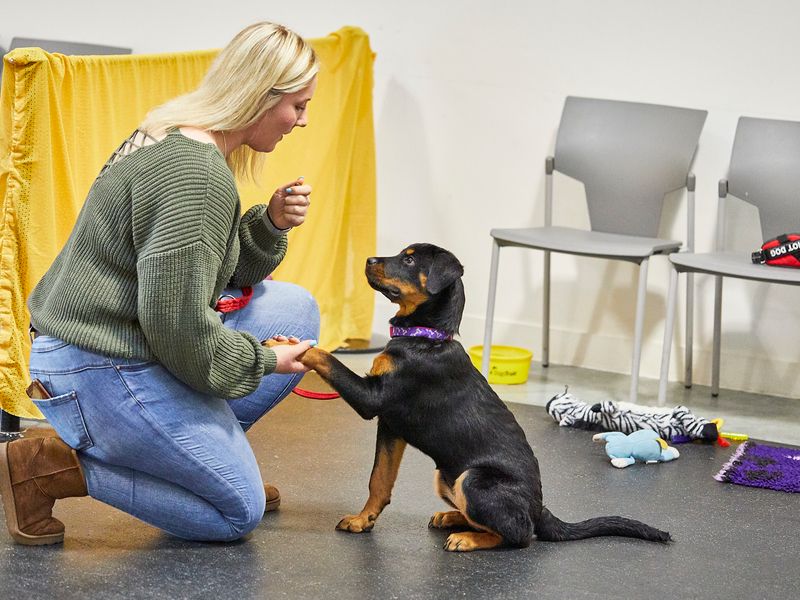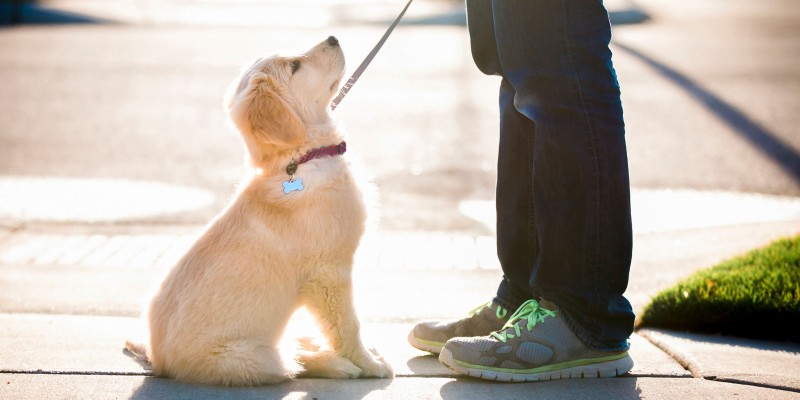The Best Puppy Training Tools You Need to Ensure Success
The Best Puppy Training Tools You Need to Ensure Success
Blog Article
Top Young Puppy Training Techniques to Guarantee a Well-Behaved Family Pet
Effective young puppy training is important for growing a well-behaved companion, and different methods can considerably influence a pet dog's advancement. As we explore these techniques better, it comes to be clear that the success of puppy training hinges on a mix of strategies that can transform your animal's actions in amazing ways.
Positive Reinforcement Techniques
Utilizing favorable reinforcement techniques is vital for efficient pup training, as it encourages desired behaviors through benefits as opposed to penalty. This method profits from the all-natural learning procedures of canines, strengthening great behavior by giving substantial and instant benefits, such as deals with, appreciation, or playtime. By connecting positive end results with specific actions, pups are most likely to duplicate those habits in the future.
Incentives should be given immediately after the desired behavior takes place to create a clear link in the young puppy's mind. In addition, differing the types of benefits can keep a pup's passion and motivation throughout the training process.

Uniformity in Educating Commands
Keeping consistency in training commands is essential for enhancing the lessons discovered with positive support techniques. Pets flourish on regular and predictability, so using the same verbal commands and hand signals for specific behaviors is necessary. This harmony assists puppies comprehend what is expected of them, reducing complication and aggravation for both the pet and the trainer.

Timing also plays a considerable function in uniformity. Commands ought to be delivered promptly during training sessions and complied with immediately by positive support, such as deals with or appreciation. This instant action aids solidify the association between the command and the desired behavior.
Including uniformity into training sessions will create a steady discovering atmosphere, promoting quicker proficiency of commands. Eventually, a well-structured method fosters a solid bond in between the young puppy and its proprietor, bring about an extra obedient and mannerly animal.
Socialization With Other Animals
Socialization with other pets is essential for a young puppy's growth, as it assists them learn appropriate actions and communication abilities in varied social contexts. Early communications with different animals can considerably influence a pup's temperament and adaptability in different circumstances. When young puppies are revealed to a variety of animals, they become extra confident and less afraid, which can prevent prospective behavior concerns later in life.

In addition, observing body movement throughout communications is vital. Instruct your pup to recognize signals from other pet dogs, such as signs of playfulness or pain, fostering mutual respect and understanding. Routine socialization not just boosts your pup's social skills however also adds to their general well-being, creating an extra harmonious living environment. To conclude, focusing on interactions with various other family pets will generate a all-around and socially experienced canine.
Cage Training Advantages
Identifying the numerous advantages of crate training can greatly improve both the young puppy's and proprietor's experience. Crate training provides a safe and safe atmosphere for young puppies, ensuring they really feel shielded when laid off. This feeling of safety and security can substantially lower anxiousness and stress and anxiety degrees for both the proprietor and the pet.
Additionally, cages act as a useful housebreaking tool. Young puppies normally prevent staining their resting location, consequently urging them to hold their bladder till they are let outside. click to read This impulse can accelerate the house-breaking procedure, fostering great practices beforehand.
Crate training also assists in taking care of a pup's behavior when unsupervised. By giving an assigned area, owners can prevent devastating actions, such as chewing on furnishings or entering into damaging substances. Additionally, crates can be beneficial throughout travel, supplying a familiar area that can aid soothe a pup in new environments.
Lastly, establishing a dog crate routine motivates freedom, allowing puppies to discover just how to be alone without fear. Generally, dog crate training is a reliable approach for promoting safety and security, technique, and serenity, leading to a well-adjusted, mannerly family pet.
Chain Training Fundamentals
Leash training is a fundamental facet of accountable pet ownership that makes sure a enjoyable and secure walking experience for both the puppy and its proprietor. Proper chain training begins early, preferably throughout the young puppy's socialization duration. When out in public., this training aids develop great routines and advertises favorable habits.
To start, pick a comfortable collar or harness that fits your pup well. Attach a durable chain, guaranteeing it is not too long, as this can result in drawing and erratic actions. Begin in a silent atmosphere to reduce disturbances and gradually present your puppy to brand-new surroundings.
Use positive support strategies, such as treats and appreciation, to encourage your puppy to walk beside you. If your puppy draws, stop strolling and wait for them to return to your side before proceeding.
Additionally, include brief training sessions with enjoyable diversions to develop your young puppy's emphasis. With dedication and perseverance, chain training will certainly result in a well-mannered companion, making walks satisfying for both the wikipedia reference owner and the young puppy.
Conclusion
In final thought, employing efficient puppy training techniques is important for developing a mannerly animal. Generally, these methods collectively advertise a harmonious connection between puppies and their proprietors.
As we explore these methods further, it becomes clear that the success of pup training hinges on a combination of strategies that can change your pet dog's behavior in remarkable means.
Making use of positive support strategies is crucial for effective puppy training, as it motivates desired habits via benefits instead than penalty.Crate training likewise assists in managing a young puppy's actions when without supervision.Leash training is an essential element of responsible pet dog possession that ensures a risk-free and enjoyable walking experience for both the pup and its owner.In final thought, using efficient pup training techniques is important for creating a mannerly pet dog.
Report this page